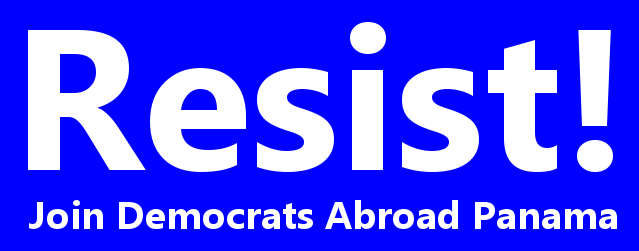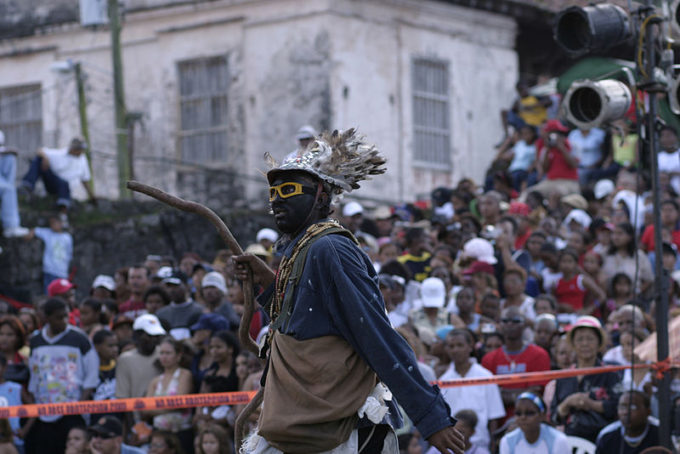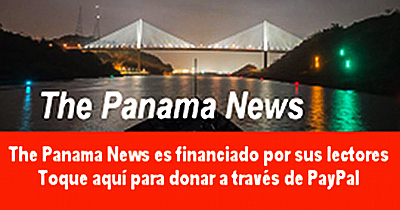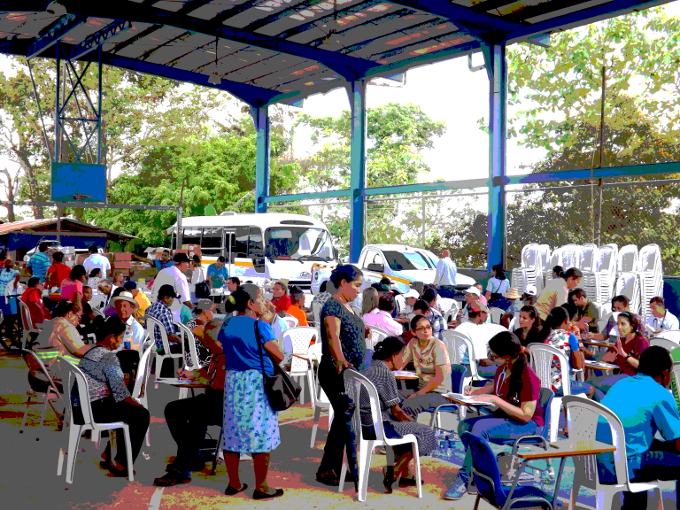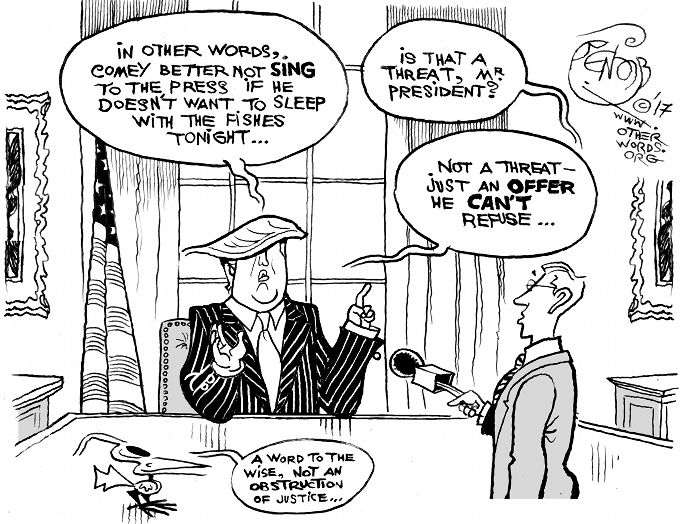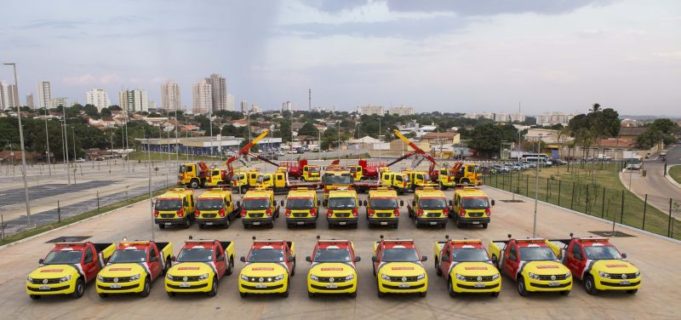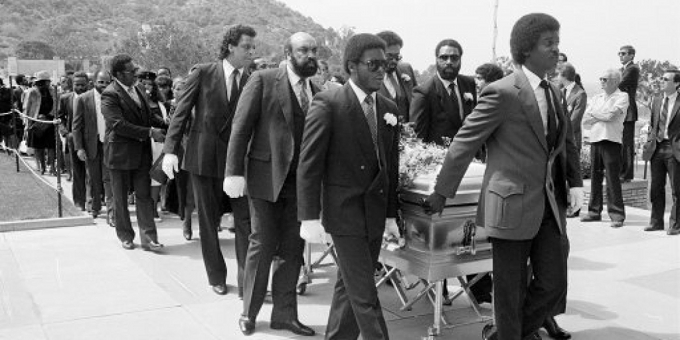Violence and blame assignments in Caracas (video in Spanish). There appears
to be a general Panamanian consensus against bringing that sort of stuff here.
Vene politics don’t go over well here
by Eric Jackson
Two recent Venezuelan gaffes — an anti-Chavista one, then a pro-government one — have caused discomforts in both official bilateral relations and the status of Venezuela’s diaspora community here.
In the backdrop we might notice Panama’s ever-shrinking “newspaper of record,” La Prensa. It still folds, but its dimensions are down to a size approaching those of a tabloid and it isn’t nearly as thick as it was. This is primordially a function of the revenue crises of print newspapers almost everywhere, but other than the physical downsizing another of La Prensa’s survival strategy appears to be accelerating its decline. In a country with corporate secrecy and business and media cultures to match, the gossip mill can take on added powers, and the bochinche is that La Prensa’s economic problems have shifted control from the mostly Panamanian shareholders — none of whom are allowed more than a one percent stake — to mostly Venezuelan bondholders. Whether it’s that, or just a play to the mostly upscale new Venezuelan immigrant community, La Prensa has taken on the appearance of a sensationalist Caracas opposition rag. Perhaps there are wealthy benefactors in the United States or elsewhere backing up this editorial stance, in which day by day La Prensa’s lead stories tend to come from Caracas. The problem with this, however, is that for a variety of reasons Venezuelans are not particularly popular in Panama.
The Chavistas? They have few supporters among the Venezuelan community here, and only modest Panamanian backing. The warm embrace is mainly a leftist fringe thing. Panama is a commercial crossroads with a strong bias toward capitalism. However, we are also one of the Bolivarian republics, with a traditional current in our political thinking that has called itself Bolivarian since long before the rise of Hugo Chávez. “Bolivarian” as in upholding the Great Liberator’s ideal of Latin American unity and greater insulation against control by powers from outside the region. While only a few Panamanians want the sorts of political and economic policies that the late Fidel Castro brought to Cuba, a lot of people here nevertheless lamented his passing as that of a man to be admired for standing up to tremendous US pressures for all of those decades. Similarly, there are Panamanians who would not embrace his policies who still admired Hugo Chávez for his defiant resistance against foreign manipulations.
Venezuela’s opposition? Those who ask a local Venezuelan are likely to hear their narrative. Those who rely on mainstream corporate news corporations for their information about events in and around Caracas will also have heard that version. Home-grown libertarians and those Panamanians who follow US right-wing political thinkers will tell you about how Venezuela’s crisis proves the failure of socialism. Many of those who recognize the economic squeeze that’s strangling the Chavista regime as a function of an economy entirely dependent on oil in times of low prices are nevertheless annoyed with Venezuela — insolvency in Caracas has left many Panamanian businesses, particularly Colon Free Zone merchants and Copa Airlines, holding the bag. On the other hand the opposition to the Chavistas is led by white oligarchs, some palpably racist, some palpably manipulative of the news. To many Panamanians, it’s bad enough that we have the rabiblancos in positions of economic, political and cultural hegemony who are like that. Another social layer that replicates such attitudes and behaviors coming from Venezuela the Panamanians who resent that aspect of Panama’s elites will not readily accept. A few well publicized incidents have stamped that image on the Venezuelan community here, even if it’s unfair to cast all or most of Panama’s Venes in that light.
Both defending the current government of Venezuela and promoting its opposition are fringe causes here. Given the mainstream news coverage and his own clumsy moves, Nicolás Maduro probably gets the worst of that competition. Far more powerful in Panama than either of those poles, however, is support for the notion that all Venezuelans ought to be expelled from Panama. It appears that support for or opposition to this species of intolerance will be one of the major issues of the 2019 PRD presidential primary.
Most Venezuelans in Panama are of a well educated but ruined middle class. The oligarchs tend to get into Miami or Madrid. Some look to return once things have settled down in their country of origin, some flit back and forth between here and there, but on the whole Venezuelans who have come here in the 21st century look to establish new lives in Panama. They notice public fears and resentments and try to avoid stirring those. However, Panamanians of the right, both the libertarians and the thuggish authoritarian Martinelistas, have been wooing the Venes for years. Hence the La Prensa editorial line. Hence the 2014 election season Martinelli solidarity with Venezuela rally, which was actually more of a matter of Venes for the former president’s proxy ticket event.
On May 10, leftist groups on the University of Panama campus were holding a solidarity with the Venezuelan government event in the Humanities Department faculty lounge. Several dozen students, faculty members and administrators were there. About 20 young Venezuelans came onto the campus to register their objections to the meeting, and when a few tried to enter the room with their anti-Maduro signs fisticuffs ensued. Campus security was called in and the Venes were escorted off of the campus. Afterward Minister of the Presidency Álvaro Alemán blamed the incident on Venezuelan opposition supporters trying to provoke a confrontation and President Juan Carlos Varela ordered an increased police presence at all events in Panama related to Venezuela, from whichever side.
Venezuela’s ambassador to Panama, Jorge Duran Centeno, then weighed in on Twitter. He said that his diplomatic mission had “evaluated the aggressive conduct among social media users” and urged that “they have to be identified.” Vice President and Foreign Minister Isabel De Saint Malo took umbrage at that: “Mr. Ambassador, as a diplomat you have my respect, but it’s good to know that in Panama we respect freedom of expression and the right to dissent.”
Similar flaps have been ongoing in other countries, as Venezuelan emigres of the opposition camp have staged disruptions at events sponsored or attended by Venezuelan diplomatic missions, and the Maduro administration has pushed back with complaints and calls for crackdowns. In Madrid it took the form of an opposition demonstration at the Venezuelan Cultural Diversity Center, prompting Venezuela’s ambassador there to complain of “a campaign to incite hatred on an international level” that’s marked by “a streak of fascism.”
Varela was clear and even-handed about his policy in a statement on Telemetro: “It is unacceptable and we will not permit the conflict to cross these borders.” About the university incident he said that “if they insist on this behavior then Migracion will have to play its role.” In keeping with the opinions of most Latin American leaders, Varela reiterated his plea for Maduro to meet with his opponents and negotiate a settlement to Venezuela’s crisis.
~ ~ ~
These announcements are interactive. Click on them for more information.



